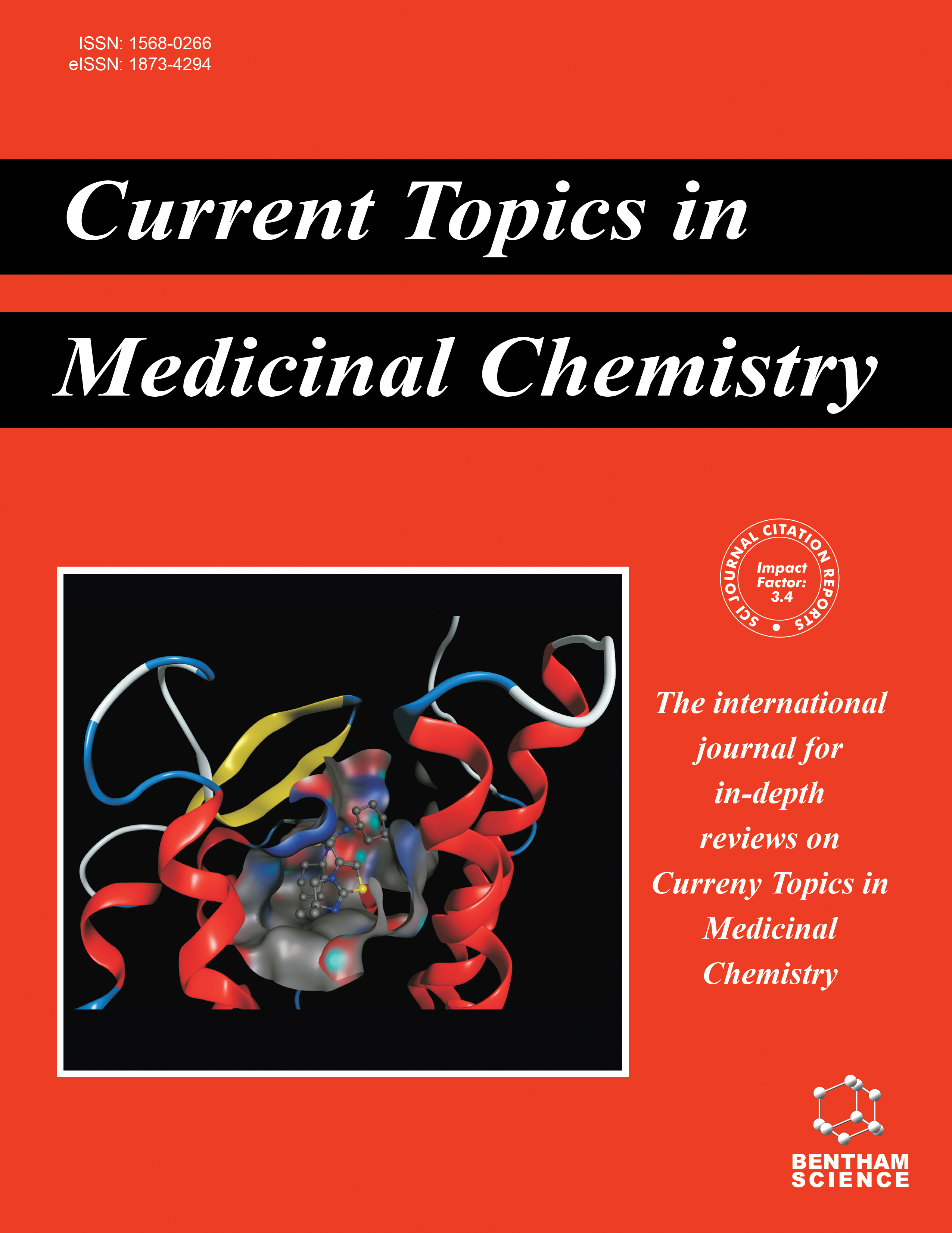- Home
- A-Z Publications
- Current Topics in Medicinal Chemistry
- Previous Issues
- Volume 16, Issue 8, 2016
Current Topics in Medicinal Chemistry - Volume 16, Issue 8, 2016
Volume 16, Issue 8, 2016
-
-
The Molecular Mechanisms and Rational Design of Anti-Diabetic Vanadium Compounds
More LessAuthors: Xia Niu, Ruyue Xiao, Na Wang, Ziwei Wang, Yue Zhang, Qing Xia and Xiaoda YangVanadium compounds are promising anti-diabetic agents. Although BEOV was not able to succeed in phase II clinical trial, great progresses have been made in the past three decades on the discovery and development of anti-diabetic vanadium compounds. A vast of knowledge has been obtained on the molecular mechanisms of both the pharmacological and toxicological effects of vanadium complexes. It has been revea Read More
-
-
-
Organoselenium Small Molecules and Chromium(III) Complexes for Intervention in Chronic Low-grade Inflammation and Type 2 Diabetes
More LessAuthors: Jun Zhou, Huibi Xu and Kaixun HuangThere is growing evidence to suggest that chronic, low-grade inflammation occurs in abdominal obesity, insulin resistance, type 2 diabetes mellitus and related complications, and that proinflammatory cytokines play an important role in the onset and progression of type 2 diabetes. These findings consequently provide new opportunities for the use of anti-inflammatory strategies to correct the metabolic disorders. Discover Read More
-
-
-
Potential Roles of Selenium and Selenoproteins in the Prevention of Alzheimer's Disease
More LessAlzheimer’s disease is a devastating and invariably fatal neurodegenerative brain disorder with no cure. AD is characterized by two pathological protein deposits, the senile plaques composed mainly of amyloid-β (Aβ) peptide and the neurofibrillary tangles which are bundles of paired helical filaments (PHF) of protein tau. In addition, oxidative stress, disorders in signal transduction and metal ions dyshomeostasis also play sign Read More
-
-
-
Relationships Between Mitochondria and Neuroinflammation: Implications for Alzheimer’s Disease
More LessAuthors: Heather M. Wilkins and Russell H. SwerdlowMitochondrial dysfunction and neuroinflammation occur in Alzheimer’s disease (AD). The causes of these pathologic lesions remain uncertain, but links between these phenomena are increasingly recognized. In this review, we discuss data that indicate mitochondria or mitochondrial components may contribute to neuroinflammation. While mitochondrial dysfunction could cause neuroinflammation, neuroinflammation Read More
-
-
-
Neuroprotection of Coenzyme Q10 in Neurodegenerative Diseases
More LessAuthors: Xifei Yang, Yanling Zhang, Hua Xu, Xiaobin Luo, Jun Yu, Jianjun Liu and Raymond Chuen-Chung ChangCoenzyme Q10 (CoQ10) is a component of electron transport chain and acts as an antioxidant. It is also used for preventing neurodegeneration against mitochondrial deficiency and oxidative stress. Therefore, CoQ10 has received increasing attention as therapeutic and preventive intervention for neurodegenerative diseases. This review article focuses mainly on the structure of CoQ10, the function of CoQ10 and th Read More
-
-
-
The Role of Berberine in the Multi-Target Treatment of Senile Dementia
More LessAuthors: Min Huang, Siyan Chen, Yubin Liang and Yi GuoDementia is an acquired progressive cognitive dysfunction, affecting the content of consciousness rather than the level of consciousness. Most dementia is senile dementia, accounting for the majority of dementia. The most important and common form of senile dementia is refractory dementia, which includes Alzheimer's disease (AD) and vascular dementia (VD). Due to the diversity and uncertainty of the pathogenic Read More
-
-
-
Characterization and Immunological Evaluation of Low-Molecular- Weight Alginate Derivatives
More LessAuthors: Xu Xu, Decheng Bi and Min WanAlginate is a naturally occurring acidic linear polysaccharide obtained from marine brown seaweed. Low molecular weight structurally diverse derivatives and oligosaccharides derived from alginate have shown various tremendous biological and pharmacological activities. It has been demonstrated that immuno-inflammation is involved in many prevalent human diseases, such as cancer, severe infection and neurodeg Read More
-
-
-
Anti-Inflammatory and Pro-Resolving Effects of N-3 PUFA in Cancers: Structures and Mechanisms
More LessAuthors: Qi Wang, Minghua Hu, Huibi Xu and Xiangliang YangAs an important hallmark in cancer progress, inflammation attracts more and more interests in recent years. Lots of evidences support the positive effect of n-3 PUFA in inflammation-associated diseases, the supplement of these fatty acids is thought to be promising in the prevention and treatment of cancers. In this review, we summarize some current knowledge of the mechanisms by which n-3 PUFA are thought to atte Read More
-
Volumes & issues
-
Volume 25 (2025)
-
Volume 24 (2024)
-
Volume 23 (2023)
-
Volume 22 (2022)
-
Volume 21 (2021)
-
Volume 20 (2020)
-
Volume 19 (2019)
-
Volume 18 (2018)
-
Volume 17 (2017)
-
Volume 16 (2016)
-
Volume 15 (2015)
-
Volume 14 (2014)
-
Volume 13 (2013)
-
Volume 12 (2012)
-
Volume 11 (2011)
-
Volume 10 (2010)
-
Volume 9 (2009)
-
Volume 8 (2008)
-
Volume 7 (2007)
-
Volume 6 (2006)
-
Volume 5 (2005)
-
Volume 4 (2004)
-
Volume 3 (2003)
-
Volume 2 (2002)
-
Volume 1 (2001)
Most Read This Month
Article
content/journals/ctmc
Journal
10
5
false
en


